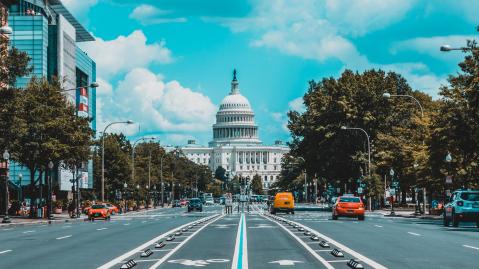Image

Copyright
© Jorge Alcala / Unsplash
Caption
Washington DC, USA
Lightbox Image (duplicate of Image)
Body (only for migrated news)
On 1 March 2021, the four signatory jurisdictions of the Transportation and Climate Initiative Program (TCI-P) – Connecticut, the District of Columbia, Massachusetts, and Rhode Island – released a draft Model Rule with program details and a schedule for implementation for the envisaged transport sector ETS in the Northeastern United States.
The Model Rule is based on the Memorandum of Understanding (MoU) released late last year. Its provisions are similar to the program features of the Regional Greenhouse Gas Initiative (RGGI) covering the electricity sector in 11 states. The draft Model Rule will now go through a public comment period until 1 April 2021 before a final version can be adopted and TCI-P participating states adopt regulations aligned with its provisions.
Signatory jurisdictions hope that more states will eventually participate in the program. Delaware, Maryland, New Jersey, New York, North Carolina, Pennsylvania, Vermont, and Virginia have participated actively in developing the TCI-P and can join the program in the future.
According to the draft Model Rule, reporting of emissions and fuel shipment data will begin as of January 2022, while the first three-year compliance period with obligations to surrender allowances for covered entities will start January 2023. Further design elements of the TCI-P as set out in the draft Model Rule are as follows.
Cap
The four signatory jurisdictions of the TCI-P MoU will start with a cap of 42.1 MtCO2 in 2023, made up of the four TCI-P jurisdictions’ CO2 emissions budgets (Connecticut: 13.5 MtCO2; Massachusetts: 24.5 MtCO2; Rhode Island: 3.3 MtCO2; Washington, D.C.: 0.9 MtCO2). The cap will decline steadily to achieve a 30% emissions decline by 2032.
Scope
The TCI-P covers CO2 emissions from the combustion of gasoline and on-road diesel fuel in the participating states. Compliance obligations fall upstream, to firms that supply the covered fuels within the states.
Allocation
All allowances will be allocated via auctions, with a floor price of USD 2.50 in 2023 that increases annually by 2.5%.
Market stability mechanisms
A Cost-Containment Reserve (CCR) and an Emissions Containment Reserve (ECR) will be established. The CCR releases additional allowances for sale at auction (in an amount equal to up to 10% of the annual allowance budget) when a CCR trigger price (USD 12.00 in 2023) is reached at auction, while the ECR withholds up to 10% of the annual allowance budget when prices at auction fall below the ECR trigger price (USD 6.50 in 2023). Both trigger prices will rise 7% annually.
Flexibility Instruments
The limited use of offsets will be permitted. Covered entities will be allowed to cover up to 3.3% of their annual compliance obligations with offsets from forestry, landfill methane capture and destruction, and avoided methane emissions from agricultural manure management.
Banking
There is no limit on the banking of allowances for future compliance periods.
Monitoring and Compliance
Compliance is evaluated at the end of each three-year compliance period, with the first compliance period starting 1 January 2023. The first two calendar years of each compliance period are each defined as an interim control period. In each year of the interim compliance period covered entities must surrender allowances equal to at least 50% of their annual emissions.
Emissions will be calculated and reported to each participating state’s respective regulatory agency on a monthly basis, with reports verified through third-party verification after the end of each year. Entities with emissions exceeding their allowances must surrender allowances equal to three times the amount of excess emissions. Furthermore, covered entities may also be subject to specific penalties imposed by the TCI-P state where the entity is located.
Revenue use
At least 35% of auctioning revenue, which returns to participating states, must be invested in low-income and disadvantaged communities to ensure that they benefit equitably from clean transportation projects and programs. Each signatory jurisdiction will also establish a representative Equity Advisory Body, specifically designated to ensure that the impacts of the program are effective and just, and that both the policies and flow of investment are transparent.
